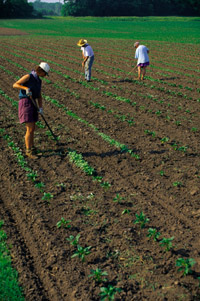More organic advantages
This article was originally published in June 2008
(June 2008) — Researchers from Iowa State University are reporting that a long-term study shows organic practices outpace chemically based farming in yield, profitability and improved soil quality.

Just last month, the Sound Consumer reported that the Organic Center’s analysis of nearly 100 peer-reviewed studies concluded yes, there is sufficient research to confirm the nutritional superiority of organic foods.
Researchers at Iowa State began their study in 1998 to compare differences between organic and non-organic crop production systems. They set up experimental plots at a research farm, using identical crop varieties on four plots each of soybeans and corn for both non-organic and organic systems.
Led by Kathleen Delate of the agronomy and horticulture departments and supported by the Leopold Center for Sustainable Agriculture in Ames, Iowa, the study is believed to be the largest, statistically valid comparison of organic and non-organic crops in the nation.
After nine years of comparisons, clear differences emerged: rotating the corn and soy plantings with numerous crops over an extended number of years — according to organic models — produced greater yields, increased profitability, and steadily improved soil quality. The comparisons included the three-year transition to certification of the organic fields.
After the transition was completed, Delate found that the organic crop yields equaled the non-organic yields per acre.
In the fourth year, organic corn yields outpaced those of corn grown with synthetic fertilizers and pesticides. Yields of organic and non-organic soybeans remained similar and comparable every year of the trial.
The biggest differences, however, showed in soil and water quality. Delate said the organic plots absorbed and held more water, reduced soil runoff, and more effectively recharged groundwater supplies.
The organic soils also utilized nutrients more efficiently, making them available when and where the plants needed them.
The structure of the soil and its stability — minimizing erosion — also remained good, despite increased tillage involved with rotating crops from field to field.
